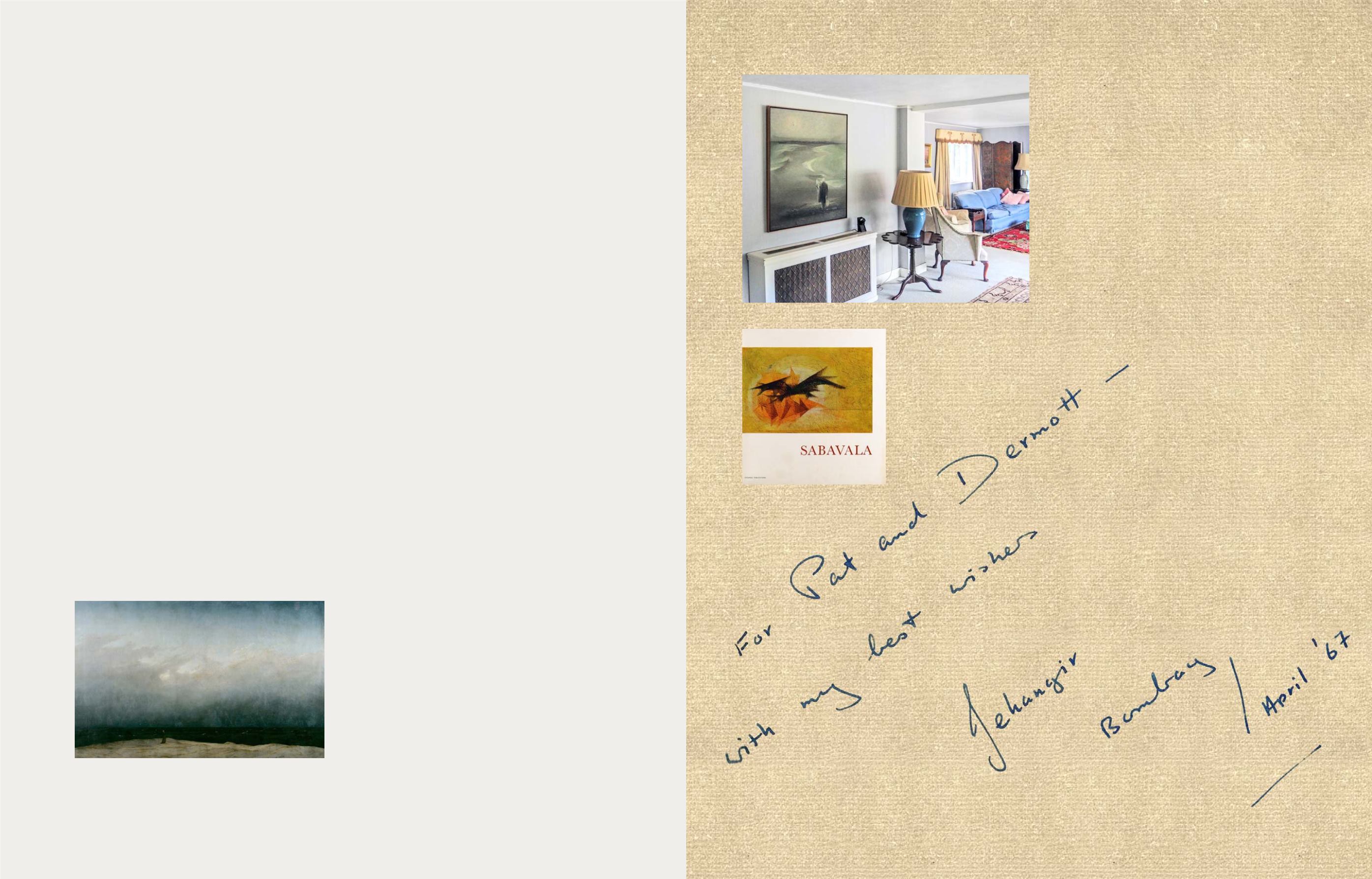

28
29
The present lot in the drawing room of the de Trafford family home, Beaulieu, Hampshire
Signed copy of book included with this lot
SIR DERMOT AND
PATRICIA DE TRAFFORD
The de Trafford family trace their roots to Lancashire in
England. In 1967 Dermot de Trafford (who later became the
head of the family as Sir Dermot de Trafford) and his wife
Patricia visited India to attend a conference.Theymet Jehangir
Sabavala in what was then called Bombay. He presented them
with a book of his work, published by Sadanga, inscribing it
to the collectors. This book is included as part of this lot. A
friendship developed and subsequently, they purchased the
present lot,
The Star That Beckons
directly from him. The
painting was taken to their country house, fondly called The
House in the Wood, near Beaulieu in Hampshire. It has hung
in the drawing room ever since.
JEHANGIR SABAVALA
A RECKONING BEYOND THE “ISMS”
MEERA GODBOLE‒KRISHNAMURTHY
Editor‒in‒Chief, Saffronart
Caspar David Friedrich,
The Monk by the Sea
, 1808‒1810
Alte Nationalgalerie, Berlin
Wikimedia Commons
Jehangir Sabavala was an iconoclast, an unusual persona
on the Indian art scene. His interests lay in a myriad of
“isms,” from Cubism to Existentialism, from Romanticism to
Spiritualism, and yet, he resisted being tied down to any
particular philosophy. In spite of his decidedly European
art training and intellectual leaning, as the film‒maker
Arun Khophar put it, “People who only knew him as a
‘Westernised' person, did not know how deep was his
knowledge of the Indian landscape, its trees, rocks, ravines
and waterfalls.” (Arun Khopkar, “Colours of Absence,”
The Hindu Magazine
, 10 September 2011, online) His art
remains in a space that is universal and timeless, primarily
because he dealt with the concerns of the human
condition. He stated, “I think, as a painter, in all those hours
spent alone, you are not only thinking of the painting. You
are thinking of yourself, of death, of mortality, of tragedies
and happiness.” (Artist interview with Yashodhara Dalmia,
quoted in Anindita Ghose, “In His Eternal Quest, Sabavala
Applied Precepts of Cubism,”
Live Mint
, 3 September 2011,
online)
The 1960s and ’70s were a period in which he had begun
to break away from the formalism of structured Cubism
in order to integrate allegory and certain nuances of
mysticism into his work.
The Star that Beckons
, painted in
1968, embodies many of Sabavala’s overriding concerns. In
a revealing statement to the American art critic George
Butcher in 1964, Sabavala wrote, “No longer am I satisfied
with the juxtaposition of planes, the search for rare colour,
the almost total denigration of the unpremeditated. It is
the intangible which is now my goal. Space and light, and
an element of mystery begin to permeate my canvasses.”
Not unlike the Star in the title of the present lot, it was
Light which beckoned Sabavala. A luminescence began to
permeate his serene canvases.
European traditions of landscape painting made a
distinct impact on Sabavala’s understanding of form and
composition. Unlike the English and French Romantic
painters who focussed on pastoral scenes or on taming
the wilderness that was Nature, German Romanticism was
unique in its almost cerebral desire to understand nature.
This inquiry must have resonated with Sabavala’s quest.
Caspar David Friedrich’s iconic 1808‒1810 painting titled
The Monk by the Sea
offers insight into Sabavala’s search
for divinity. In both paintings, a lone figure, the
Rückenfigur
,
is placed with his back to the viewer, on a lonely journey
into a vast, still landscape with a horizon which seems
to be a mere stand‒in for infinity. There is no scale, no
structural reference to suggest any notion of humanity or
narrative possibilities. As a result, one is left contemplating
the immensity of nature. Sabavala masters the art of
minimalism in this canvas, creating an atmosphere that
inspires awe.
Whether or not the journey is religious, as connotated by
the beckoning star, or secular, in keeping with his portrayals
of pilgrim in exile, Sabavala’s subtle canvas presents a world
of intrigue and introspection that lies beyond the merely
mortal structures of the many “isms” that frame such
conversations.


















